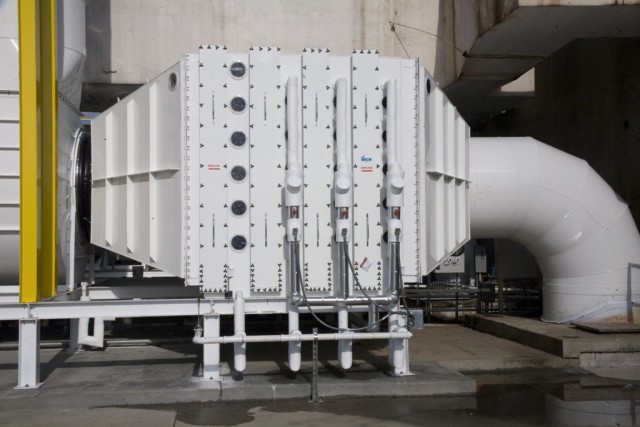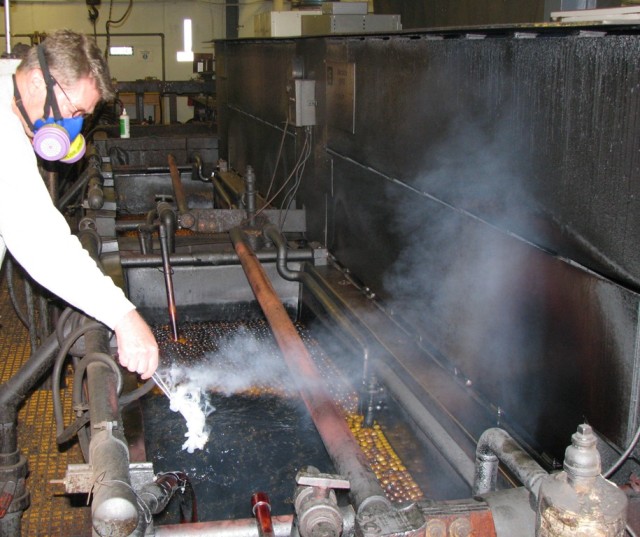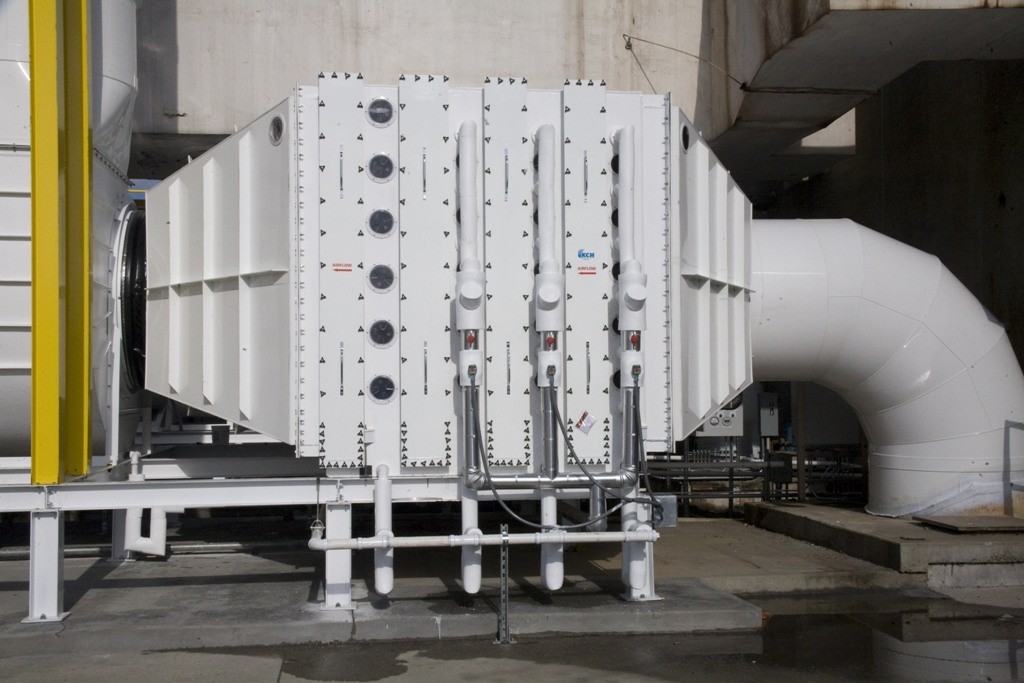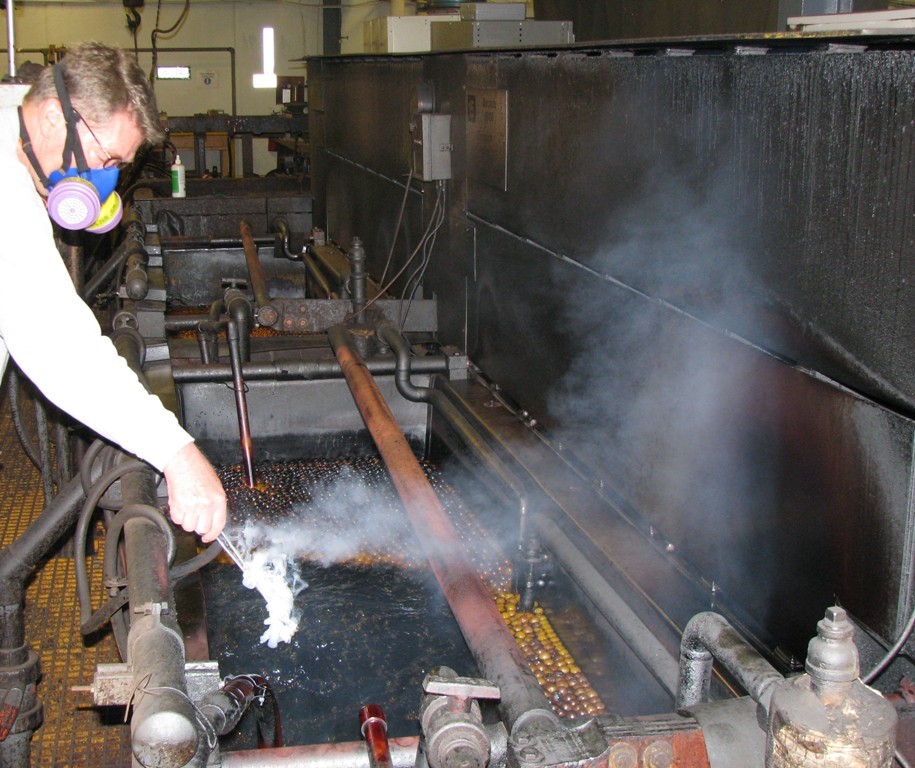ANNISTON ARMY DEPOT, Ala - Most everyone has heard of the epic book and film "Gone with the Wind," which was filled with a lot of tragedy. Much was lost as people and things vanished with the winds of war.
Sometimes, though, when things disappear into thin air, it is not always a tragedy. Such was the case in the electroplating shop when Patty Dodson, an engineer with the Directorate of Engineering and Quality, became concerned about the worsening ventilation system on the chrome plating lines.
Dodson saw there was potential for the deteriorating system to allow airborne chromium mist into the air, possibly causing unacceptable employee airborne exposures as well as the possibility for an Environmental Protection Agency air pollution problem outdoors.
An investigation proved the demisters outside, which use mesh pads to remove chromic acid mist from the ventilation system airstream, were badly clogged and the back-flushing used to clean them was no longer working. Since the demister pads were clogged, air could not properly pass through before blowing to the outside through the stack.
Inside the building, this caused serious reduction in the amount of air, and the exhaust ventilation system at the chrome tanks was too low to remove the mist from the chrome plating lines.
This allowed the acid mist to escape the tank and enter the work area of the electroplaters. Dodson and Brad Williard of the Directorate of Risk Management inspected the exhaust ductwork in the basement. What they saw raised serious concerns about the condition of the ductwork and how long it would continue to hold up.
Industrial hygiene monitoring of employees on the chrome plating line showed airborne chromium mist exposures for the electroplaters were slightly above the limits allowed by a new Occupational Safety and Health Administration standard.
This confirmed that the exhaust ventilation system had degraded to where it was not effective. Safety and health precautions dictated by OSHA were put in place promptly by management and the Safety Office to protect employees working on the chrome plating line.
As a temporary measure, DEQ began corrections by replacing the mesh pads of the demisters and improving the backflush system fan efficiency. While this improved the airflow, it was considered only a temporary solution while a more permanent fix was being considered.
The depot decided the entire industrial ventilation system on both chrome lines - to include the exhaust hoods, ductwork underneath the floor in the basement, the demisters and the fans - needed to be replaced. DEQ worked with Mischa Sharp in the Directorate of Public Works and the Army Corps of Engineers for needed improvements.
DEQ requested and received the additional necessary funding for the project.
Experts in industrial exhaust ventilation within the Army assisted Anniston Army Depot with developing conceptual drawings and specifications for the new ventilation systems.
The contractor used by the CoE later submitted their own engineering drawings and detailed calculations for the project. Safety engineer Daley Speer along with the Industrial Hygiene Office did a very thorough review to verify drawings and calculations would meet the needs of this building.
By the end of December 2009, the entire system was replaced. Ventilation testing of the system was done by the contractor under close review by depot engineers to verify the installed system met specifications and performed properly.
With the new system in use, employees on the chrome line were monitored again for chromium by the Industrial Hygiene Office. The result showed that airborne chromium levels were well below the OSHA standard thus proving the new system was effective. Stack testing was also done as required by EPA, and the results were the best ever recorded by the contractor conducting the test.
This collaborative effort eliminated a potentially serious health hazard for our electroplaters as well as an OSHA violation. It prevented a potential EPA emission failure while improving our continued ability to support the mission of Anniston Army Depot to support our troops.
It was a collaborative effort that rid the depot of this health and environmental risk. Thanks to the new ventilation system, the problem is "gone with the wind."




Social Sharing